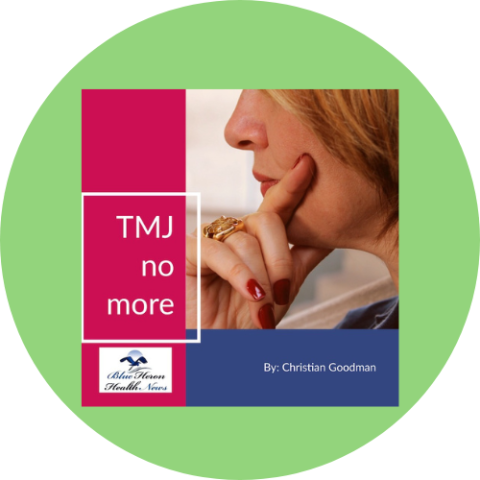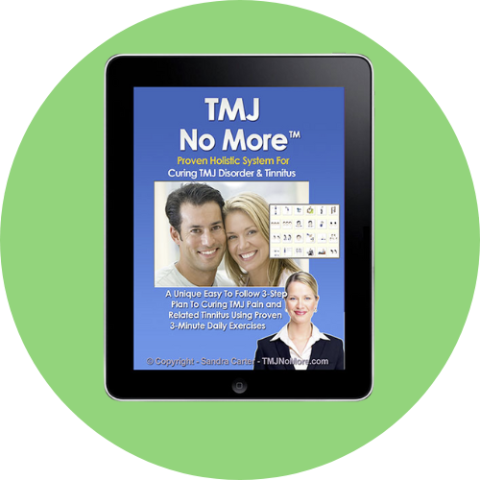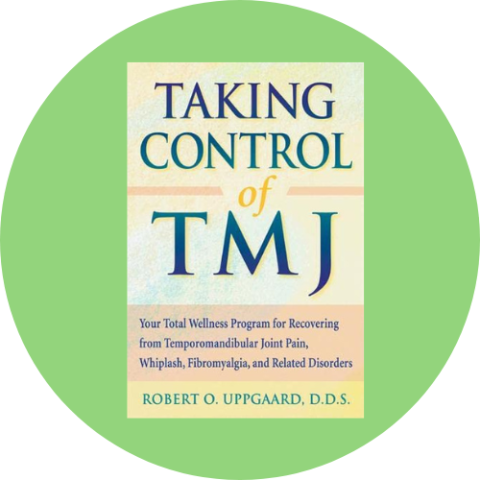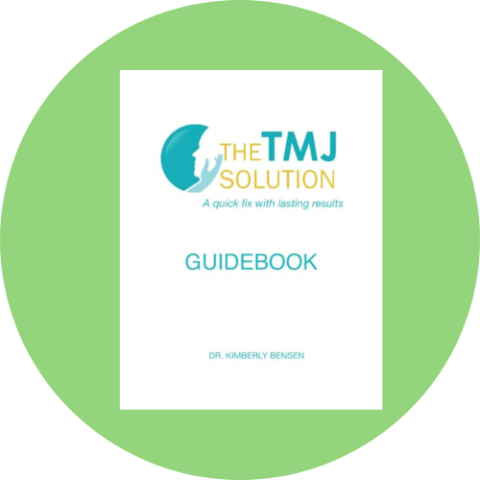4 Surefire Ways to Relieve Facial Pain: Complete Guide 2024
By Vanessa Richards
January 10, 2024 • Fact checked by Dumb Little Man

You can conceal your pain with your mouth but not with your face.
Our face, which extends from the forehead to the chin, is a vital part of our head. It helps us perform at our finest by supporting our senses of sight, smell, hearing, and taste.
What if you suddenly get a sharp and jabbing pain on one side of your face? How about a tingle or pain when brushing your teeth or applying makeup?
Isn’t it difficult to smile?
No need to worry! This article will explain facial pain, its causes and symptoms, and how we can treat it.
Causes of Facial Pain
Pain in the face can range from mild to severe and may have several underlying causes. Knowing the source of persistent facial pain is crucial for treating and preventing it.
Headaches
It is among the frequent and typical causes of facial pain. Several distinct headaches can result in facial pain, including:
- Ice pick headaches: Characterized by severe stabbing pain. These intense pain bursts can affect the temples, eye sockets, and sides of the head and last about 3 seconds.
- Cluster headaches: Highly unpleasant and typically strike unexpectedly. They induce a burning pain around the eyes and temples. They might occasionally spread to the back of the head. A runny nose and red, puffy eyes are some more symptoms.
- Migraine headaches: Sudden, intense, and may only affect one brain area. On one side of the face, torso, or both, a tingling and numbness sensation may be experienced. That may be due to an aura and visual and sensory abnormalities.
Injuries
Facial injuries, particularly those that harm the nerves in the face, are another prevalent cause of facial pain. Some examples of facial injuries are:
- Cuts and blows from accidents
- Aggression
- Falls
- Damage to nerves due to aesthetic operations or surgeries
Other signs of facial nerve damage include tingling, numbness, and even paralysis in or near the injured area.
Trigeminal Neuralgia
The facial trigeminal nerve can be affected by a chronic pain condition, often known as trigeminal neuralgia or tic douloureux.
The discomfort typically strikes out of nowhere and might be anything from a burning sensation to sharp pain. The average attack of trigeminal neuralgia can last up to two minutes.
However, bouts can occasionally linger for several days or even weeks. Trigeminal neuralgia may increase in frequency and intensity too over time.
TMJ Disorders
The temporomandibular joints (TMJs), located immediately below the ears, connect your lower jaw to your skull. You could injure yourself if you grind your teeth or chew too forcefully.
The term “TMJ disorders” is a catch-all condition that causes pain and movement issues in the jaw joint and muscles.
TMJ disorder symptoms can include:
- Jaw pain from the face, head, or neck, and jaw muscle stiffness,
- Difficulties opening and closing the mouth, including jaw locking, and
- Painful clicking, popping or grinding sound when moving the jaw.
Dental Abscess
A buildup of pus, known as a dental abscess, can form when germs infect the soft tissue of a tooth. Having bacteria inside the tooth might damage the tooth.
It may result in severe throbbing pain that radiates to your jaw and ear. You can experience dental sensitivity.
Your face and gums could become red, swollen, and painful to the touch. Fever and an unfavorable tongue taste or odor are possible symptoms too.
Sinusitis
The sinuses are the small chambers behind the nose, cheeks, and forehead. When the sinuses swell up, sinusitis develops.
A buildup of mucus might result from obstructions brought on by sinus inflammation. A stuffy or clogged nose and green or yellow mucus flowing from the nose are some symptoms of sinusitis.
A weakened sense of smell, pain, pressure, and soreness in the face are also possible. These are particularly around the nose, cheeks, and forehead.
Moreover, there is facial pressure and pain, particularly around the eyes and nose.
Sialadenitis
An uncommon illness called sialadenitis causes the salivary gland in the mouth to swell and get infected. Usually, either the submandibular gland below the chin or the parotid gland in front of the ear is affected.
The area of the mouth or face closest to the affected gland may hurt from sialadenitis. Fever and chills can accompany the other symptoms.
Skin flushing close to the infected gland and pus that leaks into the mouth can signify sialadenitis.
Deviated Septum
Your septum is the cartilage-like structure that divides your two nasal passageways. It might become damaged as a result of an accident or sickness.
Breathing through one nostril becomes more difficult as a result of this. There’s a chance that your sinus infections, nosebleeds, and stuffiness will worsen, and it could cause facial pain.
Shingles
The virus stays in your body and might reappear as an uncomfortable and blistering rash after having chickenpox. As the rash develops into red, fluid-filled blisters, it may tickle, burn, and itch, targeting the area of your face.
Heart Attack
Besides the chest, the jaw can also experience pain during a heart attack. During a heart attack, women may particularly experience jaw pain on the left side of their faces.
Chest discomfort, sweating, shortness of breath, nausea, and lightheadedness are symptoms.
Classifications of Facial Pain
Medical experts classify facial pain into one of several categories, such as:
- Dental pain refers to issues with the teeth and gums.
- Temporomandibular pain, which affects the jaw muscles and is directly related to a temporomandibular joint disorder
- Vascular pain is caused by problems with blood vessels and blood flow
- Nerve pain, also known as neuralgia, refers to conditions affecting facial nerves.
Dr. Kim Burchiel, an internationally recognized neurosurgeon at OHSU, created this classification system to ensure the proper treatment of facial pains caused by neurological disorders.
- Trigeminal neuralgia Type 1 (TN1): This type develops independently and is not a result of an injury. It occurs in more than half of the episodes.
- Trigeminal neuralgia Type 2 (TN2) develops independently and is constant for more than half of the episodes.
- Trigeminal neuropathic pain results from unintended trigeminal nerve damage, such as facial trauma, stroke, or cosmetic complication.
- Trigeminal deafferentation discomfort is a pain in a previously numb part of your face following surgery.
- Symptomatic trigeminal neuralgia may be experienced by patients with multiple sclerosis by degeneration of the covering of the trigeminal nerve.
- Postherpetic neuralgia: A pain caused by an outbreak of herpes zoster, the virus that causes chickenpox and shingles.
- Atypical facial pain: A pain that is caused primarily by a mental or emotional problem.
- Nervus intermedius neuralgia: Characterized by recurring episodes of severe pain deep in the ear. It may spread to the ocular area or other parts of the ear.
- Glossopharyngeal neuralgia: characterized by recurrent episodes of severe pain in the back of the throat near the tonsils, tongue, and ear.
Diagnosing Facial Pain
When should you consult a physician? Facial pain is manageable if treated promptly.
The proper classification system can help direct medical attention to the root cause of facial pain syndromes.
If you are experiencing any of these facial pain symptoms, please call and make an appointment.
- Fever
- Swelling
- Flushing or redness
- Severe facial or dental pain
- Sudden and unexplained fatigue
A doctor usually begins diagnosing the condition by asking about the patient’s symptoms and medical history. A physical examination may also be performed.
To make a diagnosis, your doctor may request an imaging test such as a CT scan, X-ray, or MRI scan. These imaging tests aid in diagnosing bones, muscles, and tissue problems.
Additionally, they might conduct blood tests to check for infections. Nerve conduction studies can assess how well a person’s facial nerves function.
Treating Facial Pain
The best treatment for facial pain is determined by the diagnosis and underlying cause of the pain.
1. Home Remedies
Mild facial pain is typically treatable at home. Here are some self-care remedies you can try:
- Applying an ice pack to the affected facial area for 10 to 20 minutes, multiple times a day. At the same time, wrap it in a cloth or towel.
- Keeping the head elevated may encourage fluid and mucus outflow from the face and alleviate sinusitis discomfort.
- Salt water gargling three times a day to aid with dental pain.
2. Medications

- Using over-the-counter painkillers such as ibuprofen, naproxen, or acetaminophen can provide pain relief for cluster headaches.
- Taking antibiotics typically relieves pain brought on by infections like sinusitis.
- Acyclovir and valacyclovir, two antiviral prescription drugs, may reduce the length of time that rash-related facial pain lasts.
- Your dentist may treat facial pain caused by an oral condition by prescribing antibiotics. Performing a root canal treatment or extracting the tooth is also an option.
3. Physical Therapy
Wellness professionals aim to help relieve pain by strengthening the muscles in your jaw and face. It also includes stretching, which, when done regularly, can reduce the risk of facial pain. It may include:
- Acupuncture
- Chiropractic care
- Biofeedback
4. Online Programs
Perhaps you’ve tried various methods, but nothing seems to solve your facial pain. Every day is a struggle because of the recurring pain and treatment.
It is critical to understand that treating facial pain is not a one-night solution. It requires dedication and patience.
With these comprehensively designed TMJ Programs, you are covered.
A. Natural Solution To Temporomandibular Joint Disorder: TMJ Solution
TMJ Solution, by Christian Goodman is a thorough online program. It advocates all-natural, cost-effective treatments for facial pain, especially temporomandibular joint disease.
TMJ solution Programs offer an in-depth explanation of TMJ. Simple relaxation techniques suitable for people of all ages are also included!
It is hassle-free and easy to use anytime, anywhere! Plus, it’s affordable – no need for supplements, a tight diet, or traditional therapies!
Proven and tested to treat a wide range of mild to severe facial pain. If not, there is a money-back guarantee!
Shop TMJ Solution Program at the Official Website.
Full Article: The TMJ Solution Christian Goodman Reviews 2024: Does it Really Work?
B. Natural Remedies For Tinnitus and TMJ Disorder: TMJ No More
TMJ No More is a digital program that provides natural remedies to people who suffer from tinnitus and TMJ disorder. The TMJ No More program’s tips, guidelines, and other methods are all safe and natural, so users won’t experience any side effects.
It demonstrates how simple exercises can be used to treat pain and discomfort in the jaw. Users will not have to choose risky medications, treatments, or expensive surgeries.
The TMJ No More program assists in determining the root cause of the problem and resolving it naturally. The exercises that must be performed are simple and provide quick results. Users will then be able to relax and restore their jaw muscles.
Shop TMJ No More at the Official Website.
C. Wellness Program: Taking Control of TMJ
Another popular TMJ Wellness book is Taking Control of TMJ. If you are one of the 60 million people in the United States who suffer from TMJ disorder, you may have experienced your problem being misdiagnosed or going untreated.
Perhaps you’ve spent money on treatments that were unnecessary and ineffective. Dr. Uppgaard’s Total Wellness Program will assist you in understanding this painful condition, alleviating its symptoms, preventing recurrence, and avoiding unnecessary surgery.
This comprehensive guide also investigates the relationship between TMJ disorder and fibromyalgia and whiplas.
Shop Taking Control of TMJ Book at Official Amazon Store.
D. A Guidebook To TMJ: The TMJ Solution
The TMJ Solution process, when combined with a certified practitioner, can be the closest thing to a cure. This interactive process will reduce TMJD headaches, face, jaw, and neck pain, increase mouth range of motion, reduce clenching and grinding, and reduce popping, allowing you to enjoy eating, talking, singing, and living again.
All aspects of the TMJ condition are methodically addressed at the same time, resulting in resolution in less than one month. This kit contains tools, how-to video links, and simple step-by-step instruction books that demonstrate how to quickly change the causative behaviors: oral habits, posture, ergonomics, nutritional considerations, and stress.
Shop TMJ Solution Guidebook at Official Amazon Store.
E. A Complete Guide To TMJ: TMJ No More
TMJ No More offers a comprehensive guide to treating TMJ disorder. It helps readers decipher the tricky TMJ causes and symptoms. Often times the symptoms and causes can be very trivial.
Also, the guide offers simplistic ways to relieve TMJ pain in 3 ways. While the guide includes conventional treatment options, it also mentions its corresponding consequences.
Aside from conventional treatment options, it also talks about natural remedies that have been tried and tested to help relieve TMJ disorders.
What’s more interesting is that it includes treatments for TMJ using food and nutrition (recipes included). Such as herbal and home remedies for TMJ relief that actually works.
Exercises are also part of the information provided in this book and how often these are supposed to be done. Furthermore, it offers ways how to relax your body to improve your health.
Basically, this guide offers a holistic approach to treating the disorder. The book comes in both a digital and paperback version.
Shop TMJ No More Complete Guide at Official Amazon Store.
>>Related Article: 10 Nerve Pain Medications and Remedies: Complete Guide 2024
Conclusion
The mirror of our soul is our face. No matter how pleased or hurt we are, our faces never betray our true emotions.
Facial pain is treatable or may remedy itself and merely go away. However, it can pose a possible risk to your health or may result from certain underlying health conditions.
Therefore, we must exercise prudence and be vigilant in examining the health of our faces. Face pain can be treated in various ways, including home remedies, pain medication, and therapy.
The TMJ Solution program is one of the great all-around solutions for all facial pains. It is a natural, affordable, and most effective way to relieve your facial pain.
Click Here to Get TMJ Solution Program at Discounted Price.
>>Related Article: 3 Ways to Relieve Jaw Pain: Complete Guide 2024
Facial Pain FAQs
Is the trigeminal nerve the only cause of trigeminal neuralgia?
A brain lesion may cause some people to experience trigeminal neuralgia. An autoimmune medical disorder that can affect the trigeminal nerve, such as lupus, can also be responsible.
Sjogren syndrome, scleroderma, and mixed connective tissue disorder are other examples of disorders causing trigeminal neuralgia.
Is nerve pain serious?
Neuropathy pain, also known as nerve pain, is a serious condition. It causes pain and pressure to certain parts of the body.
It can make daily activities like standing, balancing, or picking up a spoon nearly impossible. The worst-case scenario is that it becomes severe, impairing the brain’s ability to communicate with muscles and organs.
Is atypical facial pain a disability?
No, AFP is not considered a disability for disability benefits. However, you may be able to claim your benefits if your ability to work is negatively affected by facial pain.
Medically reviewed claims may either be paid or denied by providers.
Vanessa Richards
Vanessa is a mom of 3 lovely children and a software geek. Outside of her career as a health and wellness instructor. She enjoys writing and researching on topics such as finance, software, health and culinary.








